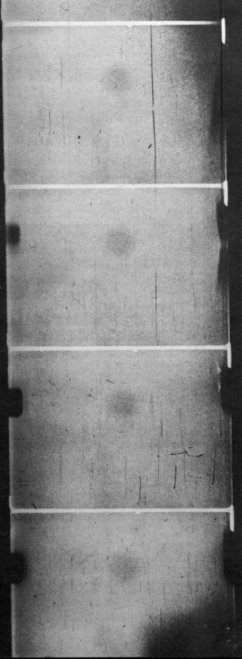Table of content:
|

|
In the Condon Report on unidentified flying object reports, the case is "investigated" and explained as being caused by a balloon.
Although the conclusion matches that of the USAF Project Blue Book, the reasoning of the Condon investigator is plain nonsense.
First, since the case was already explained by USAF's project Bluebook, it is plain nonsense to have investigated it again: the Condon effort was supposed to tell the american public wether UFOs are a serious problem or not, and not to explain again cases that were already explained.
Second, the investigation has been so lame that Condon's investigator did not even care to check the Bluebook explanation, which involves a low flying jet to explain the 450 knots radar target: instead, Condon's investigator looses himself in a ridiculous attempt to show that the "average speed" of the target was only 44 knots.
This appears very clearly when they wrote that "the visual and radar sightings (both ground and airborne) were of the same object." They were not. An this was known by Bluebook's team years ago. This was the key of the correct explanation.
Clearly, the Condon "investigations" were armchair research, and whenever they encountered a fact that did not match the "conclusion" they would just patch things up to hide the disturbing fact. In the Bellefontaine case, they "invented" an erroneous explanation whereas the correct explanation was already known.
[Page 241]
Bellefontaine. The radar operator stated that the course was 240° at 400 knots. Elsewhere the report states 450 knots; how he determined this is not made clear. Two F-86 aircraft from the 97th Fighter-Interceptor Squadron, Wright-Patterson AFB, were vectored in and made visual contact at 1055 LST. Fighters stayed with the object until 1113 LST. The F-86s climbed to 48,000 ft., fell off, and made a second climb. One aircraft had airborne radar activated and received a "weak" return. The object was described as "silver in color, round in shape," and its altitude was estimated as 60,000-70,000 ft. The object appeared on the radar gunsight film as a "fuzzy, small image ... with discernible motion ... that could be any darn thing."
In this incident it is apparent that the UFO was a real object, and the visual and radar sightings (both ground and airborne) were of the same object. All of the evidence points to a weather balloon except for the 400-450 knot speed, and the 240° flight path, which is against the prevailing upper winds. Known aircraft were ruled out because of the altitude. A U-2 would "fit," but the first one was not flown until 1955, and the visual appearance was all wrong. The radar returns eliminated astronomical objects, mirage was ruled out because of the high angles, and the sighting occurred "above the weather." The conclusion was: unknown.
However, buried deep in the report was the radar operator's note that "At the time it was dropped (1113 LST) object was five miles northwest of Springfield, Ohio." This allows the UFO's course to be plotted on a map; Figs 18 and 19, shows such a map plot. It is readily apparent from this that the UFO's true heading was about 111° at an average speed of only 44 knots. Apparently no one thought to make this simple check. Since the highest reported winds from the radiosonde launched at Dayton at 1000 LST were 260°/31 knots.
[Page 242]
Figure 18: Bellefontaine 1
Figure 19: Bellefontaine 2
at 50,000 ft. and 270°/33 knots at 55,000 ft. the plotted track of the UFO is consistent with the observed upper winds. The blip was first "painted" at a 240° azimuth, which may explain where that quantity originated in the UFO movement report.
Conclusion: almost certainly a weather balloon. Note that the winds reported for the Wright-Patterson AFB 1000 LST show winds blowing first from the east, then from the SSE, ultimately from the west at higher altitudes. These winds were blowing in such a manner that it is conceivable that Wright-Patterson's own radiosonde balloon may have been the UFO in this incident.